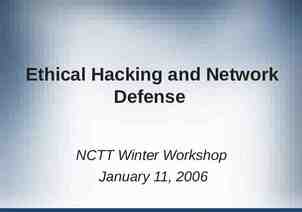Chapter 14 Water Pollution
41 Slides4.80 MB
Chapter 14 Water Pollution
Water Pollution Water pollution- the contamination of streams, rivers, lakes, oceans, or groundwater with substances produced through human activities Point sources- distinct locations that pump waste into a waterway. Nonpoint sources- diffuse areas such as an entire farming region that pollutes a waterway.
Wastewater Water produced by livestock operations and human activities, including human sewage from toilets and gray water from bathing and washing clothes or dishes.
Three reasons scientists are concerned about wastewater: Oxygen-demanding wastes like bacteria that put a large demand for oxygen in the water Nutrients that are released from wastewater decomposition can make the water more fertile causing eutrophication Wastewater can carry a wide variety of disease-causing organisms.
Biochemical Oxygen Demand (BOD) BOD- the amount of oxygen a quantity of water uses over a period of time at a specific temperature. Lower BOD values indicate the water is less polluted and higher BOD values indicate it is more polluted by wastewater.
Eutrophication Eutrophication is an abundance of fertility to a body of water. (rich in nutrients) Eutrophication is caused by an increase in nutrients, such as fertilizers. Eutrophication can cause a rapid growth of algae which eventually dies, causing the microbes to increase the BOD. A dead zone is an area with extremely low oxygen concentration and very little life. https://science360.gov/obj/video/6eeebc75-69 bd-43a8-91c8-da54be22b566/sustainability-wa ter-baltimores-urban-streams
Common Diseases from Human Wastewater Cholera Typhoid fever Stomach flu Diarrhea Hepatitis
Facts WHO estimates that nearly 1.1 billion people do not have access to safe drinking water (1/6 th of world’s population) Half of the 3.1 million annual deaths from diarrheal diseases and malaria could be prevented if all people had safe drinking water, proper sanitation, and proper hygiene. 42% of the world’s population lacks access to proper sanitation and over half of these people live in China and India. In sub-Saharan Africa, only 36% of the population has access to proper sanitation.
Testing of pathogens Indicator species: a species that indicates whether or not disease-causing pathogens are likely to be present. Fecal coliform bacteria: a group of generally harmless microorganisms in human intestines that can serve as an indicator species for potentially harmful microorganisms associated with contaminated sewage. most common is E. Coli Some level of E. Coli is considered “safe” Found in human intestines, therefore if it presence in water, human waste is most likely present also.
Treatments for Human and Animal Wastewater Septic System: a relatively small sewage system, made up of a septic tank and a leach field. Often used in rural areas. Septic tank- a large container that receives wastewater from the house as part of septic system
Septic Systems After the septic tank has been operating for some time, anything that floats will rise to the top of the tank and form a scum layer. Anything heavier than water, including many pathogens, will sink to the bottom of the tank and form a sludge layer (the solid waste material from wastewater, must be pumped out every 5-10 years) In the middle, is a fairly clear layer known as the septage. Septage contains large quantities of bacteria Through gravity, septage moves out of the septic tanks into the underground pipes . The combination of pipes below the surface of the ground make up the leach field. The pipes contain small perforations, allowing the septage to seep out into the surrounding soil (slowly). The harmful pathogens in the septage can be outcompeted by other microorganisms in the septic tank. The organic matter is broken down into CO2 and inorganic nutrients . Eventually taken up by plants.
Treatments for Human and Animal Wastewater Sewage Treatment Plants- centralized plants in areas with large populations that receive wastewater via a network of underground pipes.
Treatments for Human and Animal Wastewater Manure lagoons- large, human-made ponds line with rubber to prevent the manure from leaking into the groundwater. After the manure is broken down by bacteria, it is spread onto fields as fertilizers.
Do the math, yo Page 489 1. Daily Manure production 50L/animal * 900 animals 45,000 L Minimum lagoon capacity 45,000 L * 30 days 1,350,000 L 2. Number of trips 1,350,000 L * (1 trip/40,000 L) 33.75 trips
Prompt What is the role of bacteria in the treatment of human and animal waste?
Review Eutrophication: a. Causes dead zones b. Causes low BOD c. Is rarely caused by humans
Heavy Metals and Other Substances that can threaten human Health and the Environment Lead Arsenic Mercury Acids Synthetic compounds (pesticides, pharmaceuticals, and hormones)
Metal Source Lead -lead-lined pipes in -replacement of old pipes plumbing, brass fixtures; and paint solder used to fasten -federal guidelines for building pipes, paint, some toys. construction materials have banned lead -mostly found in older -increased use of water filtration buildings systems -laws prohibit the import of toys made with lead paint - found naturally in -can be removed from Earth’s crust; can water via fine membrane dissolve in groundwater filtration, distillation, and reverse osmosis -mining practices can contribute to presence -fetuses and infants most sensitive; can cause brain, nervous system, and kidney damage - released into atmosphere by burning of coal and incineration of garbage, medical, and dental supplies - increases in toxicity as it moves up food chain -Can damage central nervous systems, which can impair coordination -Especially dangerous to fetuses and young children Arsen ic Mercu ry - Once airborne, it can fall into rivers, lakes, and streams. Removal -reduce use of coal Health Effect - can cause cancer of the skin, lung, kidney, bladder
This is an old chart. Asia is now at 52% Africa 17% S. America: 13% N. America: 6% Europe & Russia: 11% Australia/S. Pacific: 1%
Acid Deposition and acid mine drainage affect ecosystems Acid deposition: Acids deposited on Earth as rain and snow or as gases and particles that attach to the surfaces of plants, soil, and water. Can causes low pH. Many coal-burning facilities have installed coalscrubbers to combat acid deposition. Coal scrubbers pass the hot gas produced during combustion through a limestone slurry.
Acid continued Low pH can also come from abandoned mines when they are flooded with groundwater. This combination allows pyrite to break down and produce iron and hydrogen ions. As we already know an increase in hydrogen ions leads to acidic water with a low pH (that’s a little redundant)
Synthetic organic compounds are humanproduced chemicals Organic carbon containing Inert ingredients: additives that make a pesticide more effective (typically NOT required to be tested for side effects) Pesticides and inert ingredients: Most pesticides do not target a specific species of organisms, rather a large variety of related organisms. How is this a bad thing?
Pharmaceuticals and Hormones Page 496 Effects past that of fish are still unknown Low concentrations of pharmaceutical drugs that mimic estrogen are connected to male fish growing eggs in their testes.
Military & Industrial Compounds Industrial Compounds: Military Compounds: Perchlorates: group of harmful chemicals used for rocket fuel Easily leach form soil into groundwater, where they can persist for many years. Can affect thyroid gland in humans when consumed and reduce production of hormones Companies used to directly dump chemicals into waterways. Polychlorinated biphenyls (PCB’s): a group of industrial compounds used to manufacture plastics and insulate electrical transformers and are responsible for many environmental problems. lethal and carcinogenic As the case against GE demonstrates in your book, is can take decades of research and debate to only partially reverse the damage it causes No longer used in USA, but still present in environment.
Review Is Arsenic found naturally in groundwater? Can PCB’s cause cancer?
Oil Pollution
Ways to Remediate Oil Pollution Containment using booms to keep the floating oil from spreading, then suck it up with vacuum from boat. Chemicals that help break up the oil, making it disperse before it hits the shoreline. In shallow areas, absorbent materials are used to suck up the spilled oil. These dispersants can be effective, they can also be toxic to marine life. Bacteria that are genetically engineered to consume oil There are currently no agreed-upon methods of removing underwater plumes.
Oil Pollution Review What percentage of the oil in marine waters worldwide is due to natural causes?
Nonchemical Water Pollutants Solid waste pollution (garbage) Great Pacific Garbage Patch Disposal of coal is loosely regulated in US and is exempt from federal regulations Sediment pollution (sand, silt and clay) EPA estimates cost about 16 billion/annually Can clog gills of certain animals Thermal pollution- nonchemical water pollution that occurs when human activities cause substantial change in the temperatures of water Thermal shock: a dramatic change in water temperature that can kill organisms Noise pollution: underwater noise can affect marine life High frequency from submarines and boats negatively affect lovefrequency communication between marine life
Pollutant Source Solid Waste -garbage -sludge -plastics -coal ash Sediment Effects Solution -can entangle ocean organisms -create laws and penalties -medical waste poses threat to for dumping humans on beach -fine those who violate the law -public relations campaign -construction sites -decreases photosynthetic -uses silt fences at -poor farming practices rates construction sites -clogs gills of fish and bottom -mandate riparian buffer dwellers zones near farms Thermal -electric power plants -industry -thermal shock, which causes organisms to increase respiration rate Noise -sound emitted by ships and submarines that interfere with animal communication -interferes with animal communication -causes beaching of dolphins and whales -monitor and regulate water temperature at power plants and manufacturing facilities -require cooling towers or discharge lagoons -require large ships to use quieter propellers
Water Laws Federal Water Pollution Control Act of 1948 was the first major piece of legislation affecting water quality. In 1972 the act was expanded into the: Clean Water Act- (1972) supports the “protection and propagation of fish, shellfish, and wildlife and recreation in and on the water”. Issued water quality standards that defined acceptable limits of various pollutants in U.S. waterways.
Water Laws Safe Drinking Water Act- (1974, 1986, 1996) sets the national standards for safe drinking water. It is responsible for establishing maximum contaminant levels (MCL) for 77 different elements or substances in both surface water and groundwater. Nonpoint sources are not covered in existing legislation














































